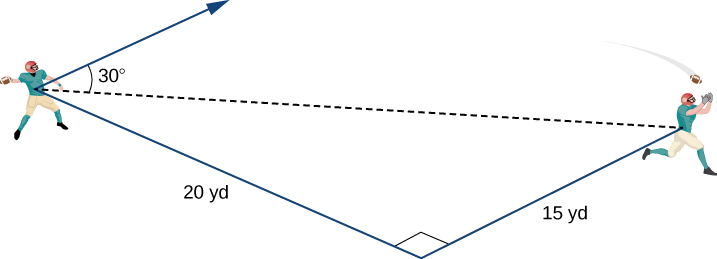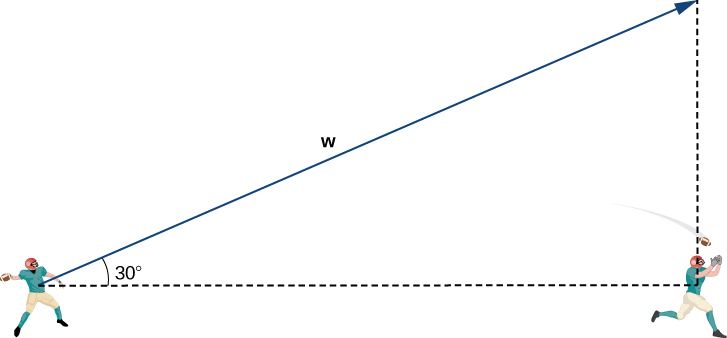| << Chapter < Page | Chapter >> Page > |
A quarterback is standing on the football field preparing to throw a pass. His receiver is standing 20 yd down the field and 15 yd to the quarterback’s left. The quarterback throws the ball at a velocity of 60 mph toward the receiver at an upward angle of (see the following figure). Write the initial velocity vector of the ball, in component form.

The first thing we want to do is find a vector in the same direction as the velocity vector of the ball. We then scale the vector appropriately so that it has the right magnitude. Consider the vector extending from the quarterback’s arm to a point directly above the receiver’s head at an angle of (see the following figure). This vector would have the same direction as but it may not have the right magnitude.

The receiver is 20 yd down the field and 15 yd to the quarterback’s left. Therefore, the straight-line distance from the quarterback to the receiver is
We have Then the magnitude of is given by
and the vertical distance from the receiver to the terminal point of is
Then and has the same direction as
Recall, though, that we calculated the magnitude of to be and has magnitude mph. So, we need to multiply vector by an appropriate constant, We want to find a value of so that mph. We have
so we want
Then
Let’s double-check that We have
So, we have found the correct components for
Assume the quarterback and the receiver are in the same place as in the previous example. This time, however, the quarterback throws the ball at velocity of mph and an angle of Write the initial velocity vector of the ball, in component form.

Notification Switch
Would you like to follow the 'Calculus volume 3' conversation and receive update notifications?